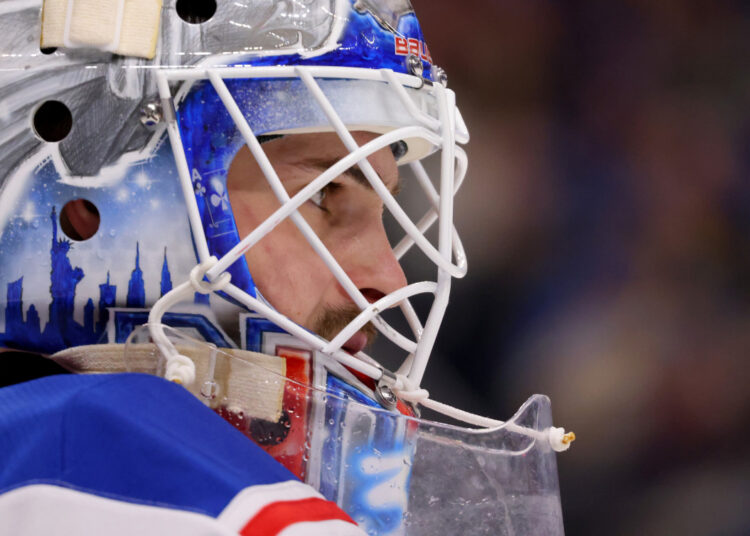Igor Shesterkin’s insistence on a full no-move clause in his eight-year contract extension with the New York Rangers is eye-catching after how the team dealt with Jacob Trouba.
No-move clauses have become a standard for NHL superstars seeking control over their future – and no one should be surprised Shesterkin worked one into his deal that will make him the NHL’s highest-paid goalie at $11.5 million per year. But Shesterkin’s firm stance that it last throughout all eight years likely stems from the team’s debatable handling of Jacob Trouba.
According to Sportsnet’s Elliotte Friedman, there’s “no doubt” the fallout from Trouba’s situation and his trade to the Anaheim Ducks played a factor in Shesterkin’s clause.
Trouba told reporters the Rangers allegedly threatened to put him on waivers unless he agreed to go to a team on his 15-team no-trade list, an action that reportedly left many players uneasy. During the off-season, the Rangers also placed Barclay Goodrow on waivers despite the left winger having a 15-team no-trade list as well, with the San Jose Sharks taking him back.
There’s been a heavy debate since the trade about the subtleties of no-trade clauses versus no-move clauses and how teams can use the differences to leverage a player who believed he had protection. With Trouba, the Rangers essentially forced out a player who wasn’t looking to leave.
It seems Shesterkin took note of this and sought to ensure he would not be placed in a similar position, particularly in the later years of his contract when his performance could decline.
Related: New York Rangers Aren’t Hamstrung By The Cap After Re-Signing Igor Shesterkin
Trust Issues Or Just Standard Protection For A Star?
The push for a no-move clause might reflect Shesterkin’s long-term concerns about how the Rangers handle their players. It may also show he has worries New York will bail on him if his usefulness at his huge cap figure starts to decline.
Or it’s just a valuable player and his agent leveraging his talent to get as much say over their future as possible. Considering there was speculation that Shesterkin could fetch $13 million or $14 million per year as a UFA, taking an $11.5-million cap hit with a no-move clause seems like a compromise.
Either way, this situation creates a scenario where the Rangers are limited in what they can do if this record-setting NHL contract looks iffy down the road or if letting Shesterkin reset the market for goaltenders backfires.
Related: New York Rangers, Igor Shesterkin Reportedly Agree To Record-Setting Extension. What’s Next?
On the one hand, securing their franchise goaltender long-term is a win. Conversely, the need to offer full no-move protection on the largest goalie contract in NHL history and over all eight seasons is risky.
Shesterkin felt the need to safeguard his future when he saw what the Rangers had done to their captain. He is surely aware that the NHL is a cutthroat environment that often asks, “What have you done for me lately?” The concern now is if there are trust issues at play here.
If Shesterkin doesn’t feel secure without full control over his future, and he was worried he’d have to look over his shoulder because of what the Rangers did to Trouba – which they were well within their right to do based on the collective bargaining agreement – it’s a shaky foundation for what should be a cornerstone relationship.
Get the latest news and trending stories right to your inbox by subscribing to The Hockey News newsletter here. And share your thoughts by commenting below the article on THN.com or by visiting our forum.
Read the full article here



























Discussion about this post